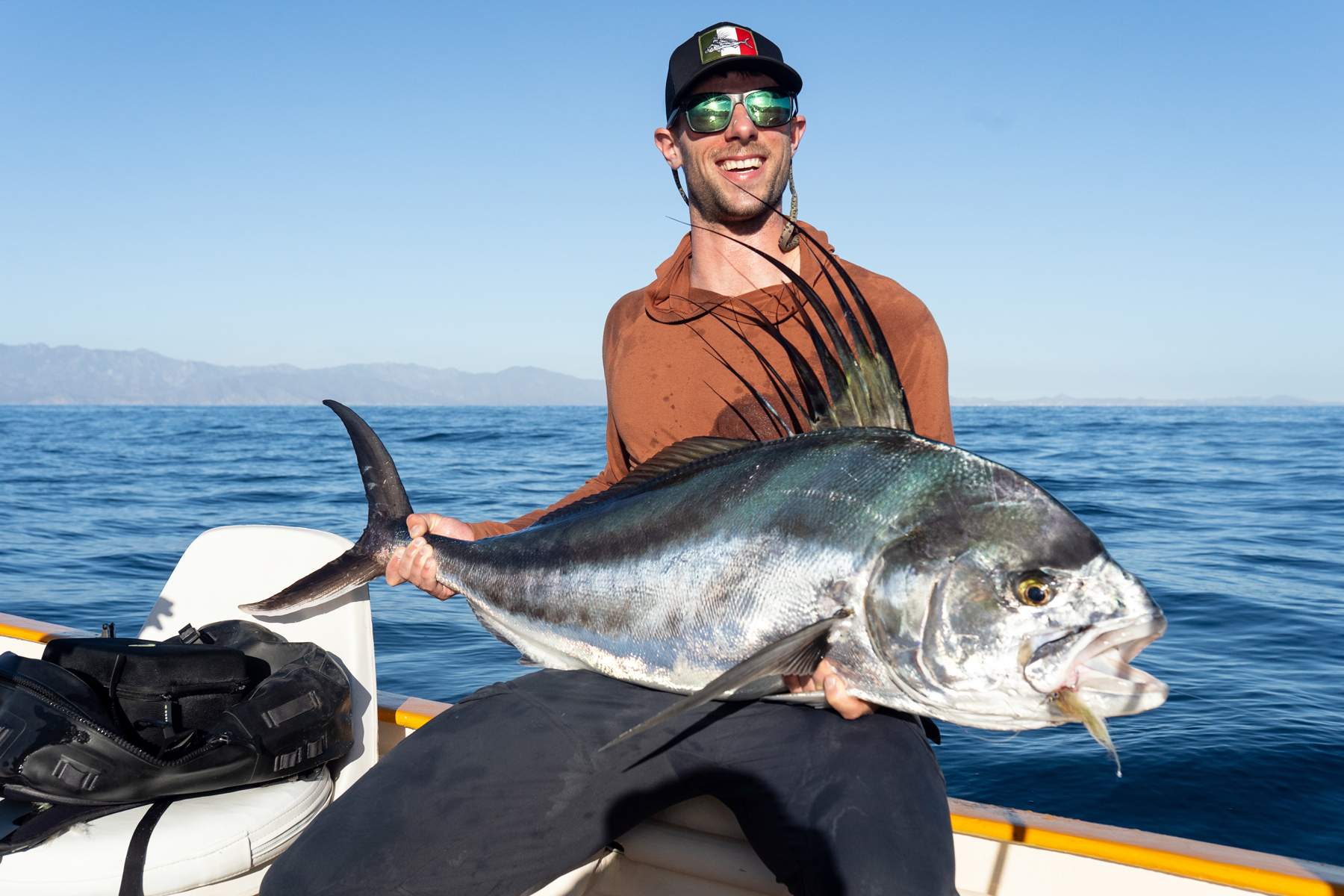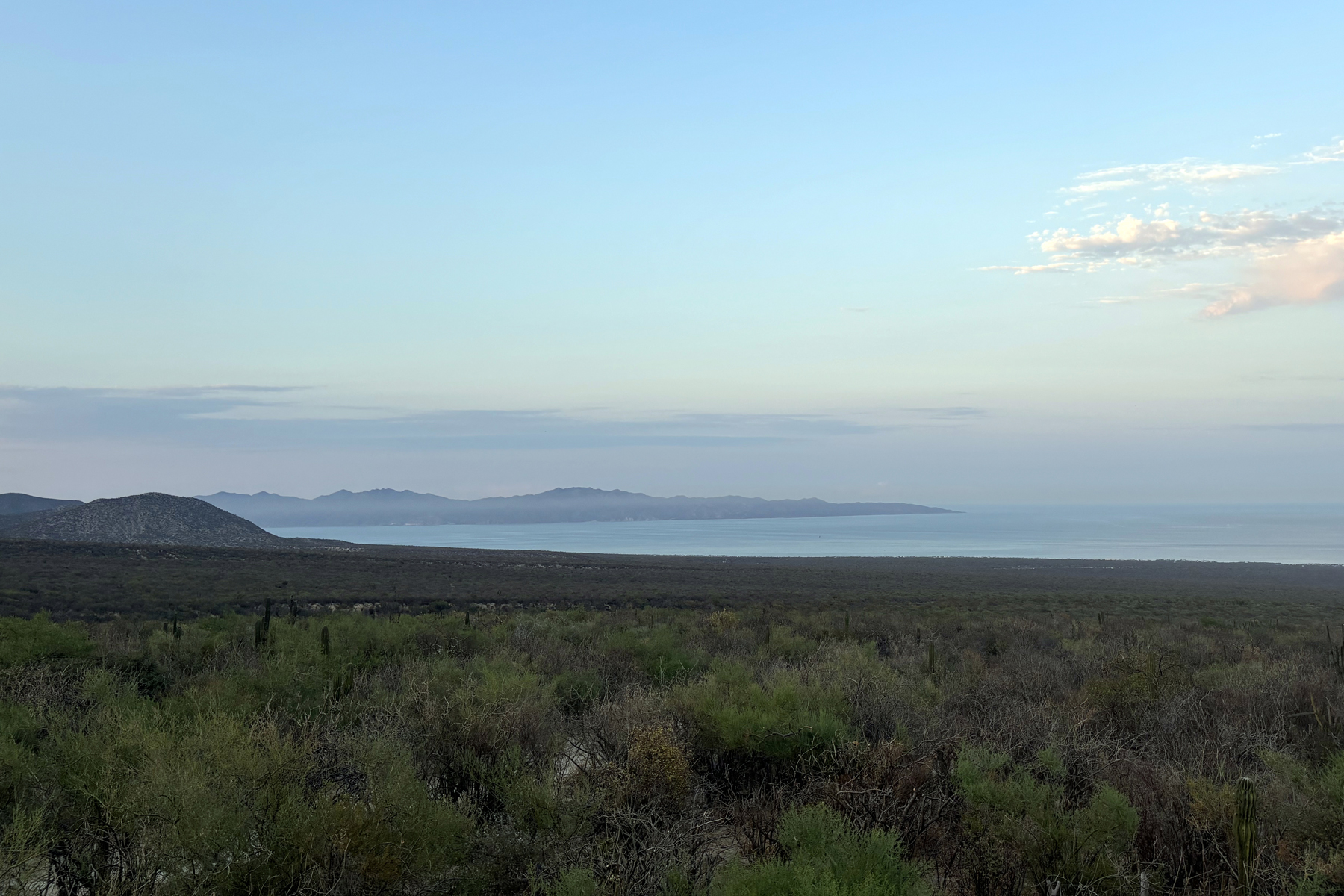Our group recently had the opportunity to fish with the Lucero family in Baja on the Sea of Cortez. This area is known for its outstanding fishing opportunities, particularly for the large Roosterfish that migrate through the region. Most of the guides in the area are family, and the fishing community seems very tight-knit. Each guide shared their insights on where the large Roosterfish might be hiding.

Every day, we drove to the boat launch where our guides were waiting, ready to set off in search of bait, which came in the form of live sardines. This bait was highly sought after; some other lodges even paid off bait boats to provide sardines exclusively for their guides.
Our main target was the large roosterfish. As a group, we were unaware that these fish could reach weights of over 100 pounds (45 kilos), or how challenging they would be to catch. On the first day, one of the boats in our group hooked several large roosterfish, claiming that they fought harder than anything they had encountered on a fly before. This prompted some of us to swap our 9-weight rods for something more powerful.
“Some people became annoyed with the Jacks, but for me, they were a good way to pass the time between attempts to catch the finicky roosterfish.”
Over the next couple of days, we had several opportunities to catch these impressive fish, but none of us could successfully land what would be considered a “Grande” roosterfish. They proved to be tougher and smarter than we had anticipated, causing us to make some modifications to our flies, lines, and leaders.
By the third day, we were all eager to keep trying and as luck would have it, a few of us found success. That evening, as we reconvened, the photos emerged, and a few of our group members proudly displayed their large roosterfish catches.
We had the opportunity to target multiple species on this trip, including Roosterfish, Dorado, Golden Trevally, Jack Crevalle, Rainbow Runner, Barracuda, Triggerfish, Trumpetfish, and the ever-prolific needlefish. The needlefish would tear up our flies whenever there were no larger predatory fish around. Some people became annoyed with the Jacks, but for me, they were a good way to pass the time between attempts to catch the finicky roosterfish.
The triggerfish were not what you might expect; they were schooled up in just 10 feet of water and would grab almost any shrimp- or crab-like fly we presented to them. The Dorado would come in, flashing bright colors and aggressively swiping at our chum, but everything would scatter when the large roosterfish appeared. The roosters seemed to dominate the scene, emerging from nowhere, moving massive amounts of water, and creating huge boils that knocked the baitfish off balance. With their long, wispy dorsal fins protruding from the water, they would chase down the baitfish relentlessly.








The trip was organized by The Fish Ranch and Rise Fishing Co. We stayed right on the water, where we could fish from the beach after spending the day with the guides. While beach fishing was slower, it was also more technical. Spotting a roosterfish from the beach is challenging, and hooking one is an entirely different skill. This experience is high on my list for the next time I’m in Baja. Every day, we enjoyed excellent meals provided for us, with packed lunches and plenty of beverages from the guides. Although I have nothing to compare this trip to, everything was outstanding. If you’re looking for big roosterfish, I highly recommend going with Mary Grigsby at The Fish Ranch.





For fishing rods, I used an 11-weight and was very glad I did. The large roosterfish can take 200-300 yards of line as soon as they are hooked, sinking to the bottom and lying there like an anchor. It’s crucial to have a rod with plenty of backbone, and I wouldn’t recommend anything less than a 10-weight unless you are extremely proficient and accurate at casting.
When it comes to reels, I ended up burning out the drag on my favorite all-around reel. With the jacks and a variety of other fish you may hook, having a high-quality saltwater reel that holds plenty of backing is just as important as your fly rod.

Sun protection is also a significant factor, just like with any warm-weather saltwater fishing. Covering up is much more effective than relying solely on sunscreen.
For the lines, floating, intermediate, or sinking lines can all work, but many in our group preferred the 50+ intermediate series from Cortland. A line that loads quickly and casts well is essential for targeting fast-moving roosters. I think the entire group underestimated the aggressiveness of the roosterfish once they were hooked. They put up a tough fight and are hard on gear.
A huge thank you to the Lucero family, Emilio the resident Chef, Mary Gribsby, and Steve Bechard for making this trip incredibly memorable. Our group cannot wait to return to Baja!















